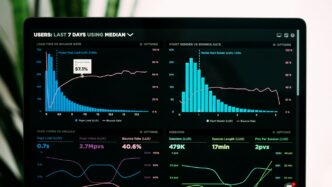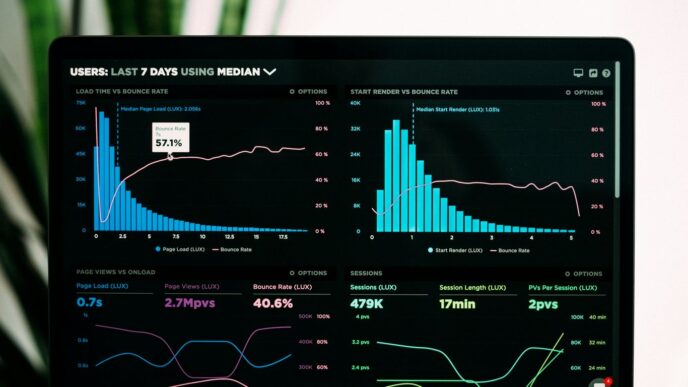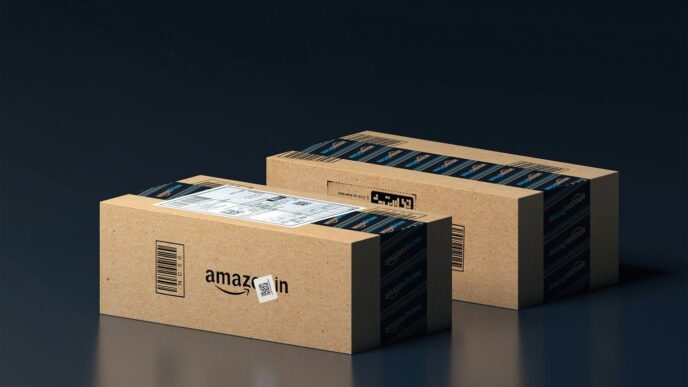The marketing landscape is changing rapidly, and as we move into 2025, businesses need to adapt to stay competitive. With new technologies and shifting consumer behaviors, the best marketing platforms are those that can harness data and provide actionable insights. This article explores the best marketing platforms for the upcoming years, focusing on trends, strategies, and evaluation criteria that will help businesses thrive in an ever-evolving market.
Key Takeaways
- AI and automation are becoming essential tools for marketers, streamlining processes and improving efficiency.
- A multi-platform approach is crucial; diversifying your marketing channels can enhance your reach and effectiveness.
- When choosing marketing platforms, prioritize features like data accuracy, integration capabilities, and strong customer support.
Emerging Trends in Marketing Platforms

The Rise of AI and Automation
AI is changing everything, and marketing platforms are no exception. Expect to see even more AI-powered features that automate tasks and improve performance.
- Smarter ad buying: AI can automate media buying across different platforms, finding the right audience in real-time. This means less manual work and better results.
- Content creation: AI tools can help generate ad copy, social media posts, and even blog content. It’s not about replacing humans, but about making them more efficient.
- Personalized experiences: AI can analyze customer data to deliver personalized content and offers. This leads to higher engagement and conversion rates.
Privacy-Centric Solutions
People are more concerned about their privacy, and regulations are getting stricter. Marketing platforms are adapting by offering privacy-focused solutions.
- Contextual targeting: Instead of relying on cookies, contextual targeting focuses on the content of the website or app where the ad appears. This is a more privacy-friendly approach.
- First-party data: Businesses are focusing on collecting and using their own data, rather than relying on third-party data. This gives them more control and ensures compliance with privacy regulations.
- Data anonymization: Platforms are offering tools to anonymize data, protecting user privacy while still allowing for effective targeting. It’s a tricky balance, but it’s becoming increasingly important.
Building a Multi-Platform Strategy

It’s not just about being on every platform; it’s about being smart about where you spend your time and money. Google isn’t the only game in town anymore, which is great news! It means we have options. Building a solid multi-platform strategy is about creating something that can handle changes and uses each platform’s strengths. Let’s get into it.
Diversifying Paid Media Channels
Think of your marketing budget like an investment portfolio. You wouldn’t put all your eggs in one basket, right? Same goes for your ad spend. Here’s how to think about spreading things out:
- Core Performers (70%): These are your reliable channels. The ones that consistently bring in results. Stick with what works, but don’t get complacent. For example, you might want to consider Google paid ads expertise to complement alternative platform knowledge.
- Growth Channels (20%): These are the up-and-comers. They’ve shown promise, and you want to see if they can scale. Maybe it’s a newer social media platform or a different type of ad format. Keep an eye on these.
- Experimental (10%): This is where you get to play around. Try out new channels, formats, and technologies. It’s a small investment, but it could pay off big time. Think of it as your "innovation" budget.
Remember, this isn’t set in stone. As you get data, adjust your allocations. Successful experiments become growth channels, and growth channels can become core performers. It’s all about being flexible and responsive.
Leveraging Unique Platform Strengths
Each platform has its own personality and audience. What works on TikTok won’t necessarily work on LinkedIn. Here’s a quick rundown:
- LinkedIn: This is your go-to for B2B, thought leadership, and recruiting. If you’re trying to reach professionals, this is the place to be.
- TikTok: Short-form video is king here. Great for reaching younger audiences and building brand awareness. Be creative and authentic.
- X (Twitter): Real-time updates, news, and PR. It’s fast-paced and conversational. Be prepared to pay to play, though.
Don’t just copy and paste the same content across all platforms. Tailor your message to fit the platform and the audience. It takes more work, but it’s worth it. Think about what makes each platform unique and use that to your advantage. For example, consider AI-powered advertising for automated creative optimization and predictive targeting.
Evaluating the Best Marketing Platforms
Alright, so you’re trying to figure out which marketing platforms are actually worth your time and money, huh? It’s not easy, I get it. There are a million options out there, and they all claim to be the best. Let’s break down what to look for.
Key Features to Consider
When you’re checking out different platforms, don’t just get caught up in the hype. Think about what you really need. Here’s a few things I always keep in mind:
- Integration Capabilities: Can this platform play nice with the other tools you’re already using? If it can’t connect to your CRM or email marketing software, it’s probably going to cause more headaches than it solves. You want something that fits into your existing workflow, not something that forces you to change everything.
- Automation Features: Seriously, who has time to do everything manually these days? Look for platforms that offer automation for tasks like posting, social media engagement, and reporting. Automation can free up your time to focus on the bigger picture stuff, like strategy and creative ideas.
- Reporting and Analytics: You need to know what’s working and what’s not. A good platform will give you detailed reports and analytics so you can track your progress and make adjustments as needed. If you can’t measure it, you can’t improve it, right?
- Scalability: Think about where you want to be in a year or two. Can this platform grow with you? You don’t want to be stuck switching to a new platform every time your business expands. Make sure it can handle your future needs.
Importance of Customer Support
Okay, this might seem obvious, but hear me out. Good customer support can be a lifesaver. When something goes wrong (and trust me, it will), you want to be able to get help quickly and easily.
- Responsiveness: How quickly does the platform respond to support requests? Are they available 24/7, or only during business hours? A quick response time can save you from major headaches.
- Knowledge Base: Does the platform have a good knowledge base or help center? Sometimes you can solve problems yourself if you have access to clear, helpful documentation. Look for platforms with detailed FAQs, tutorials, and guides.
- Training Resources: Does the platform offer training resources to help you get up to speed? Some platforms offer webinars, workshops, or even one-on-one training sessions. This can be especially helpful if you’re new to the platform or if you’re trying to learn advanced features. Don’t underestimate the value of good marketing data services and support!
When it comes to picking the right marketing platforms, it’s important to look at what each one offers. You want to find tools that fit your needs and help you reach your goals. Don’t just settle for the first option you see! Check out our website for more tips and insights on choosing the best marketing platforms for your business.
Visit us now to learn more!
Final Thoughts
As we look ahead to 2025 and beyond, it’s clear that the marketing landscape is changing fast. Businesses need to stay on top of the latest tools and trends to keep up. The right marketing platforms can make a big difference in how effectively you reach your audience and measure your success. Whether it’s using AI for smarter targeting or finding ways to connect with customers in real-time, there’s a lot to consider. Remember, it’s not just about picking the latest shiny tool; it’s about finding what works best for your specific needs. Keep experimenting, stay flexible, and don’t be afraid to adapt your strategies as the market evolves. Your next big win could be just around the corner.














